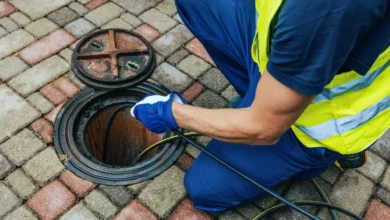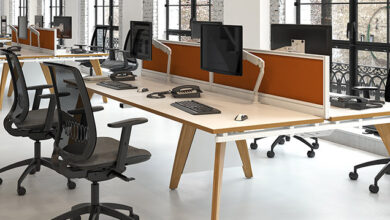Maximize Small Outdoor Spaces: Creative Landscaping Tips for Compact Gardens

A small outdoor space doesn’t have to limit your landscaping dreams. With the right design strategies, you can transform even the tiniest garden into a functional, beautiful oasis. Whether you live in an urban apartment with a balcony or have a cozy backyard, maximizing the potential of compact gardens can provide an inviting space for relaxation, entertaining, or growing your own plants. Here are some creative landscaping tips to help you make the most of your small outdoor space. For more information check out landscape company in dubai
1. Think Vertically: Use Walls and Fences
When you’re working with limited space, think upward. Vertical gardening is an excellent way to add greenery without taking up valuable floor space. By using walls, fences, or trellises, you can create a lush, layered garden that gives the illusion of more space while making your garden feel vibrant.
Ideas for Vertical Gardening:
- Trellises and Arbors: Add a trellis or arbor to grow climbing plants like ivy, roses, or peas. These structures can add height and charm to a small garden while providing privacy or shade.
- Wall Planters: Install vertical planters or shelves on your walls to hold small plants or herbs. These are perfect for balconies or urban gardens where space is limited.
- Hanging Baskets: Hang baskets or containers from fences, pergolas, or overhead beams to display flowers, trailing vines, or vegetables like strawberries.
- Green Walls: For a more dramatic effect, consider installing a living wall or green screen. This vertical garden system lets you plant flowers, ferns, or succulents directly into a frame mounted on a wall.
Tip: Mixing plants of different heights and textures on vertical structures adds visual depth and interest, creating a fuller look in a small space.
2. Use Multi-Functional Furniture
In small gardens, every square foot counts, so it’s important to choose furniture that serves more than one purpose. Look for pieces that are compact, versatile, and can be used for multiple activities or storage.
Furniture Ideas for Small Spaces:
- Storage Benches: A bench with built-in storage offers seating and a place to store gardening tools, cushions, or outdoor blankets.
- Foldable or Stackable Chairs: Foldable furniture is perfect for small gardens because it can be tucked away when not in use, freeing up space for other activities.
- Convertible Tables: Consider a table that can transform into a gardening station, or one with an expandable surface to accommodate extra guests when needed.
- Nesting Tables: Nesting tables are a great option as they can be spread out for extra surface space or stacked for a cleaner look when space is limited.
Tip: Stick to lightweight, portable pieces that can be rearranged as needed to suit different functions or occasions.
3. Create the Illusion of Space with Mirrors
Mirrors are a simple yet effective way to create the illusion of space in a small garden. By reflecting the surrounding plants and sky, mirrors can make the area feel larger and more open. They also add a touch of elegance and can highlight certain design elements in your garden.
How to Use Mirrors:
- Place Mirrors Strategically: Hang a mirror on a wall or fence to reflect plants or outdoor seating areas, giving the illusion of depth. Position mirrors near greenery to enhance the lush feel of your garden.
- Use Mirrored Furniture: If you’re short on wall space, incorporate mirrored furniture like side tables or garden stools. These pieces reflect light and help expand the visual appeal of the space.
- Create Reflection Pools: A small, shallow water feature with a reflective surface can also double as a mirror. It’s a beautiful way to add texture and tranquility to a small garden.
Tip: Opt for weather-resistant mirrors or frames that can withstand the outdoor elements, especially in humid or rainy climates.
4. Incorporate Functional Hardscaping
In small gardens, hardscaping elements—such as patios, paths, and seating areas—serve as the foundation of your design. By incorporating functional hardscaping features, you can maximize space, organize the layout, and reduce the amount of maintenance required compared to a garden full of plants.
Hardscaping Ideas:
- Use Gravel or Pavers: Gravel paths or stepping stones are ideal for compact spaces. They create a structured look while allowing water to drain, preventing puddles.
- Decking or Patios: A small deck or patio provides a solid foundation for seating and dining areas. Choose materials like composite wood or stone for durability and aesthetic appeal.
- Built-In Seating: Instead of freestanding furniture, opt for built-in benches or seating along walls or fences. This allows for more space in the middle of your garden and provides a cozy spot to relax.
- Raising Planters: Elevated planters or raised garden beds can help create visual levels, adding dimension to the garden without taking up floor space. These also make gardening easier and more accessible.
Tip: When designing hardscaping features, choose neutral or light-colored materials to avoid overwhelming the space and keep it feeling open.
5. Maximize Planting with Containers and Raised Beds
Containers and raised garden beds are an excellent way to grow plants in small spaces. They allow for flexible planting, give plants room to grow, and can be moved or rearranged as your needs change. Plus, they help you control the quality of soil and drainage.
Container Gardening Ideas:
- Use a Variety of Containers: From large statement pots to small window boxes, choose containers of varying sizes and shapes to create visual interest. Consider using ceramic, terracotta, or modern fiberglass pots for durability and style.
- Stacked Planters: Use tiered or stacked planters to maximize vertical space. This design allows you to grow multiple plants in a small footprint, with each layer offering a different plant or flower variety.
- Herb Gardens: Small, portable herb gardens are perfect for balconies or small patios. You can plant them in containers or on windowsills to keep them close to your kitchen for easy access.
- Vertical Raised Beds: Vertical raised beds are a great way to grow vegetables or flowers while keeping them organized. They’re especially ideal for urban gardens or limited spaces.
Tip: Ensure that containers have good drainage to prevent water from accumulating and damaging your plants. Use a well-draining potting mix for optimal growth.
6. Play with Color and Texture
In small gardens, the use of color and texture can make a huge difference in how the space feels. By carefully selecting plants, furniture, and accessories, you can add personality, vibrancy, and depth without overcrowding the area.
How to Use Color and Texture:
- Bold Accents: Add pops of color with brightly-colored flowers, cushions, or garden ornaments. Vibrant plants like lavender, marigolds, or begonias can bring a cheerful and welcoming atmosphere to the garden.
- Mix Textures: Combine different textures to create visual interest. Contrast soft, billowing plants like ornamental grasses with the sleek lines of modern furniture or hardscaping materials like smooth stone or metal.
- Use Foliage for Color: If space is limited, opt for colorful foliage instead of flowers. Varieties like coleus, heuchera, or hostas add deep, rich tones and require less maintenance than flowers.
- Create Contrast with Light and Dark: Place dark-colored plants or furniture against light-colored backgrounds (like a white wall or light-colored paving) to make the space feel larger and more dynamic.
Tip: Avoid cluttering the space with too many colors. Stick to a cohesive color palette to make the space feel more organized and tranquil.
7. Create Zones with Rugs and Lighting
In a small garden, creating zones can make the space feel larger and more functional. Use outdoor rugs and lighting to define different areas, such as a dining zone, a reading nook, or a meditation corner.
How to Create Zones:
- Outdoor Rugs: A rug can add warmth and color to a seating area, helping to define the space while tying together furniture and decor. Choose rugs designed for outdoor use to ensure durability.
- Lighting for Ambiance: Strategically place lights around your garden to create atmosphere and highlight specific features. String lights, lanterns, or solar-powered lights along paths or around seating areas create a cozy, inviting feel.
- Privacy Screens: Use tall plants, trellises, or screens to create intimate corners within your garden. These features not only provide privacy but also help visually separate different zones.
Tip: Use soft, warm lighting in small gardens to create a relaxing and welcoming ambiance, especially in the evening.
Conclusion
Maximizing small outdoor spaces is all about being creative with the layout, choosing the right plants and features, and making every inch count. By thinking vertically, using multi-functional furniture, incorporating hardscaping, and utilizing containers and raised beds, you can create a compact garden that feels spacious, functional, and beautiful. With careful planning and thoughtful design, your small garden can become a welcoming oasis, no matter how limited your space may be.




